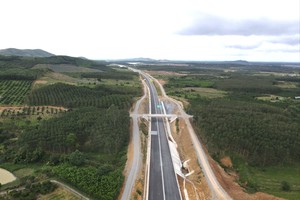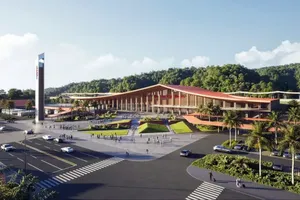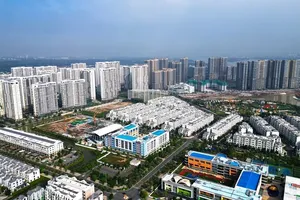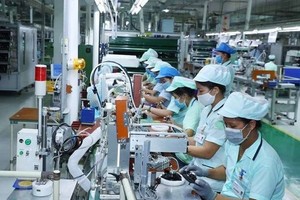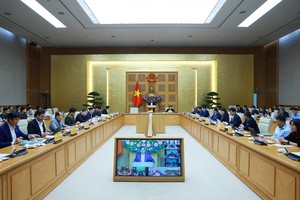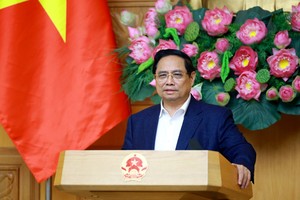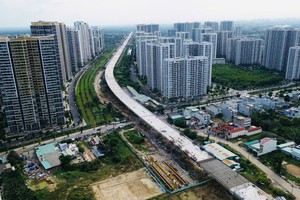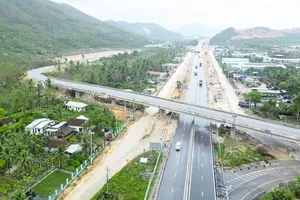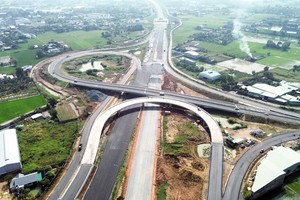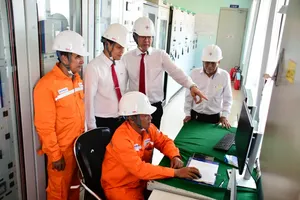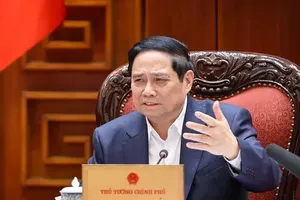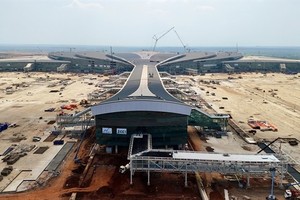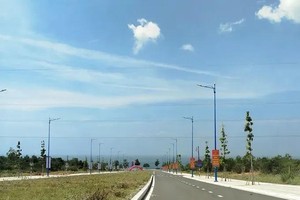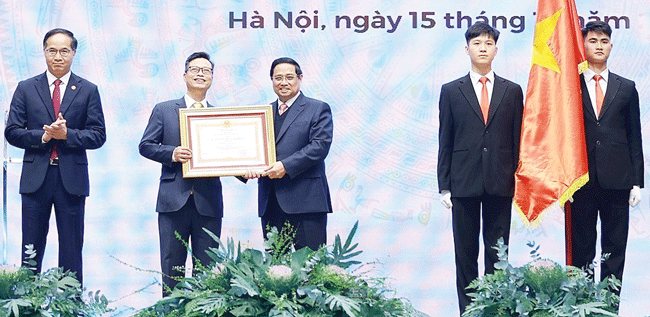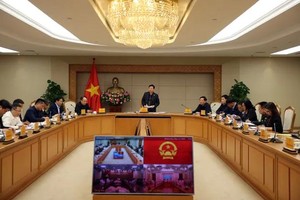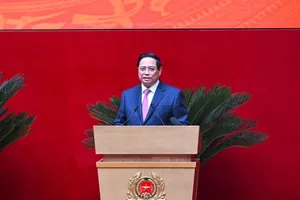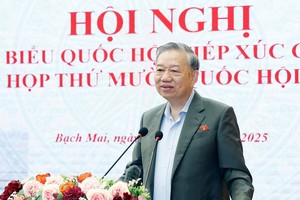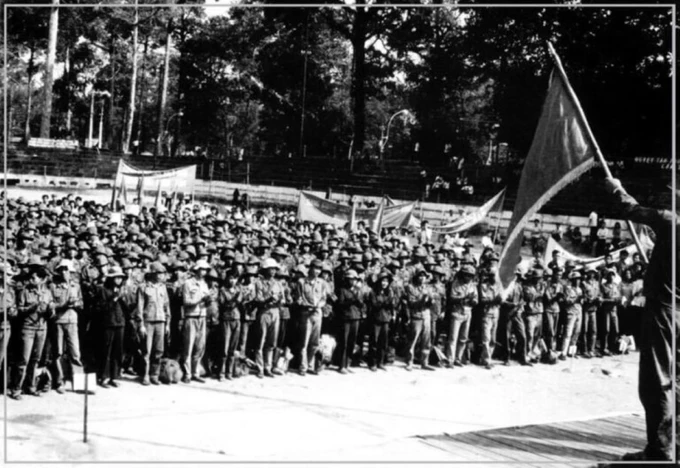
Crucible of challenges
96-year-old Phan Minh Tanh (also known as Chin Dao), then a member of the Party Central Committee cum Head of the Central Mass Mobilization Commission and one of the eleven members in the Saigon-Gia Dinh Military Control Committee, recalled the vivid memory of the pivotal era right after the national reunification as if it were yesterday.
He recalled Saigon’s post-liberation struggles as a city grappling with the aftermath of internal conflict compounded by border wars and natural disasters impacting the vital Mekong Delta rice supply, memories that still bring sorrow. Saigon-Gia Dinh, with 3.5 million residents, faced over a million unemployed and tens of thousands dealing with social issues from the former regime.
Against this backdrop of profound upheaval, the Provisional Revolutionary Government of the Republic of South Vietnam, on May 3, 1975, decreed the establishment of the Saigon - Gia Dinh Military Control Committee, with Senior General Tran Van Tra at its helm.
Despite its brief tenure (May 7, 1975 – January 21, 1976) amidst exceptionally trying circumstances, the Committee undertook a monumental volume of work, implementing a series of crucial policies to establish essential initial stability like stabilizing the populace’s lives, providing food to the impoverished, gradually restoring essential infrastructure, and securing employment for the masses.
The city’s Military Control Committee directed the formation of four delegations and thirty-four task forces, dispatched to every ward to undertake relief efforts, facilitate the return of displaced people to their ancestral homes, allocate land to the impoverished and those qualifying under government policies, revitalize production, clear mines and unexploded ordnance, collect war debris, and provide medical care to the people.
By the close of 1975, over 1,700 enterprises, employing 30,000 workers, had resumed operations; 65,000ha of suburban land were under cultivation; and the prevalence of social vices had significantly diminished.
Securing order and tranquility
The immediate post-liberation period witnessed a sharp surge in the city’s unemployment rate whereas the number of war invalids, sex workers, drug addicts, street children, beggars, and orphans swelled to hundreds of thousands.
Faced with this volatile situation, a key priority for the Military Control Committee, as mandated by the Central Bureau of the South, was to continue tracking remaining enemy forces, suppress counter-revolutionary elements, and establish civil order and security within the city. The Committee’s decisive actions during this period garnered widespread public support and resonance.
At that time, Sai Gon Giai Phong Newspaper – the official voice of the Party Committee and the people of Saigon – Ho Chi Minh City – also established the “Muon mat Sai Gon” (Saigon in All Aspects) forum, providing a platform for citizens to voice their concerns, offer suggestions, and propose solutions related to the administration of urban order and security.
Amidst a flurry of misinformation regarding Saigon’s safety, the Military Control Committee acted swiftly to stabilize public sentiment. Crucial to this was their approach in engaging with the community. Having addressed the immediate concerns of the citizens, the Military Control Committee turned its attention to economic recovery.
The Ho Chi Minh Communist Youth Union of the city (Youth Union in short) spearheaded this effort, organizing a Youth Volunteer Force that attracted enthusiastic participation from numerous young individuals eager to contribute to social welfare.
The city’s Youth Union mobilized 800 volunteers between July and October 1975 for land reclamation and irrigation, including work at Le Minh Xuan State Farm. In October, the Central Mobilization Committee for Land Reclamation and New Economic Development, formed a pioneering Youth Volunteer Force for new economic zones in Tay Ninh and Song Be provinces, serving as the basis for two larger brigades.
March 28, 1976, became a key date as over ten thousand young people from these brigades left urban life to reclaim land, restore fertility, and build new economic zones in rural and mountainous areas, demonstrating their dedication to national enrichment.
In front of the vast ranks of the Youth Volunteer Force, the then Chairman Vo Van Kiet of the HCMC Revolutionary People’s Committee presented the Youth Union flag to Secretary Pham Chanh Truc of the city Youth Union, who received and proudly raised the flag before the assembled Youth Volunteer Force, a flag emblazoned with the powerful words: “Where youth is needed, youth is there. Where difficulties exist, youth exists.”
From individuals initially unfamiliar with the tools of agricultural labor, enduring arduous days of digging under the relentless tropical sun, they unhesitatingly sought guidance from local farmers, immersing themselves in their tasks with passion and unwavering determination.
Suburban farmers still vividly recall the image of the Youth Volunteer Force at work on the construction sites of anti-flood canals at the Pham Van Hai and Le Minh Xuan State Farms, Thay Cai and the Ba Gia canals, and building intra-field irrigation systems such as the small Ca Tre dam, the Vam Nuoc Duc dam, and the Cay bang dam.
Assets held, responsibilities embraced
In the jubilant aftermath of Vietnam’s reunification, a special unit of thirty-four young soldiers received a vital mission of safeguarding the nation’s immense wealth. Among them was Hoang Minh Duyet, then a Second Lieutenant and Deputy Commander of Company C282.Q of the People’s Armed Police Force (now the Border Guard).
On April 30, 1975, Company C282.Q marched into Saigon. By May 1, they secured the National Bank, where Hoang Minh Duyet inventoried over 16 tonnes of gold and countless ancient coins. The unit then protected other key banks and the Thu Duc warehouse, a crucial supply depot.
These soldiers, from humble backgrounds, remained steadfast and incorruptible amidst vast riches, embodying the revolutionary spirit for the newly liberated Saigon. Their dedication extended to securing vital resources and protecting the nation’s currency during the exchange process. For half a year, these young men exemplified integrity and unwavering commitment to their duty, serving as role models for the citizens of the newly unified Vietnam.
